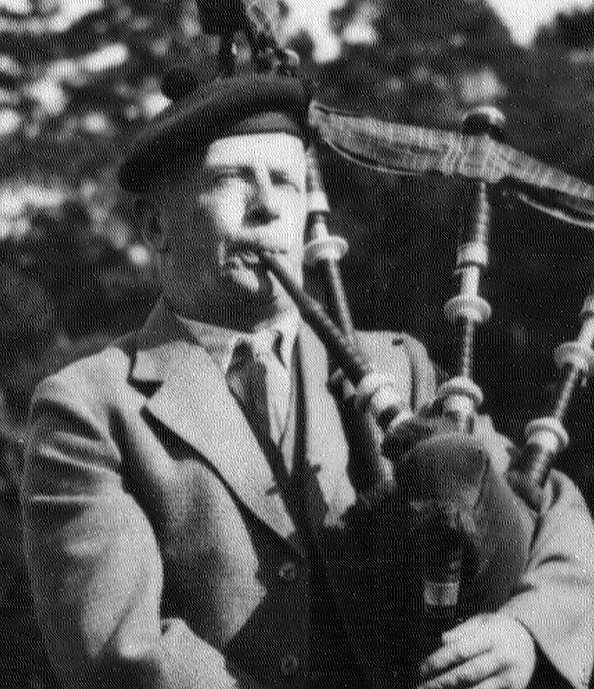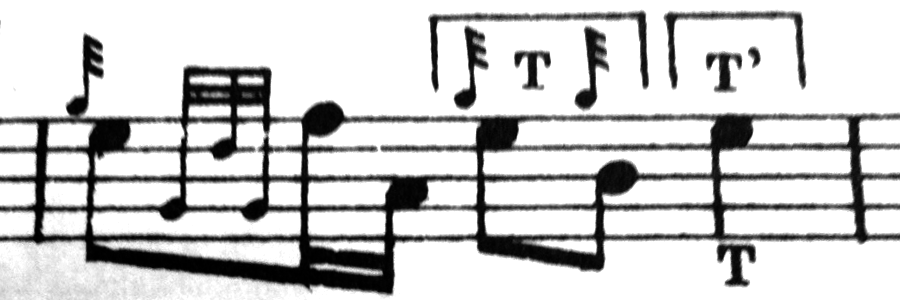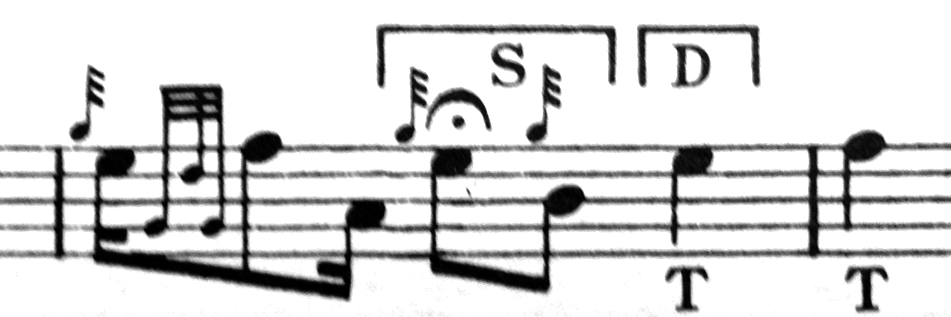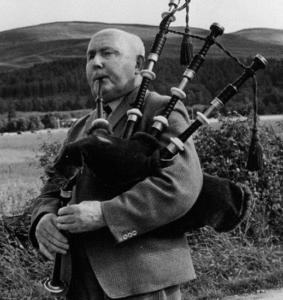James Campbell and the ‘Masters of Piobaireachd’ Series
By Norman Matheson
 In 1997, on release of the first CD in the Masters of Piobaireachd series, I sent a complimentary copy to James Campbell. Thereafter we corresponded regularly and, over the years, his several interesting letters, with analytical comments on each succeeding CD and on other contentious issues, were saved. His compliments were generous:
In 1997, on release of the first CD in the Masters of Piobaireachd series, I sent a complimentary copy to James Campbell. Thereafter we corresponded regularly and, over the years, his several interesting letters, with analytical comments on each succeeding CD and on other contentious issues, were saved. His compliments were generous:
‘The enormous value of the Masters of Piobaireachd series is that it perpetuates John MacDonald’s teaching. This was based entirely on orthodox and traditional principles, and you do not have to go along with all his preferences to recognise that everything that descends from him carries the stamp of musicality and authority. The ‘Masters’ series is, and will be, a bulwark against the process of revisionism which, in one form or another, seems to obtrude in every generation.’ (31.03.2001)
‘As always the CD has delighted me and I renew my congratulations on your enterprise.’ (08.07.2003)
However, of more tangible value was the way in which he wrote on specific topics that aroused his interest. His long and explicitly detailed letters drew on his own extensive knowledge as well as on the archive of his father’s (Kilberry) files. They were not only illustrative of the depth of his insight but were also refreshingly imbued with his open-minded, dispassionate attitude to controversial issues. Now that it is no longer possible to sit metaphorically as it were, at James’s feet, it may be of interest to disseminate, even in a small way, elements of his aura. And, although some of what follows may have been said before, it bears reiteration.
By way of introduction, the first topic on which his views are worth revisiting is that of rigidity and dogmatism. In common with his father’s similar stance, he consciously strove to avoid dogma – the inflexible and strongly held notions of rights and wrongs that dominate piobaireachd interpretation. Apart from possible reverence for the antiquity of the music, dogmatism is sustained by two propositions, the first of which is loyalty to the presumed authority of a teacher, especially if that teacher’s instructional heritage might tentatively be traced back to MacCrimmon sources. However, with an oral tradition handed down through the ages, implicit confidence in historical authenticity lacks credibility. The second, and more significant proposition, is that the interpretative rigidity that pervades piobaireachd playing stems largely from the dominance of competition as the defining factor in determining the quality of musicianship.
How often has the claim been heard with an air of finality, ‘that’s the way I got it’? James wrote lucidly in dismissing the validity of such statements in his Side Lights to the Kilberry Book of Ceol Mor. Another quoted source of alleged authority, often heard in the past, was ‘the old pipers’, who, it was claimed, always played in the same way. Angus Macpherson often referred to the musical constancy of ‘the old pipers’ and evidently John MacDonald was also wont to cite their immutability.
Referring to MoP Vol.3 (31.03.2001), James wrote, ‘There is a part of Bob Brown’s introductory remarks which struck me as open to comment. This was concerned with those whom John MacDonald always referred to as ‘the old pipers’. Brown was emphasising that they all played exactly the same. In the sense that they were all agreed on the basics, I would certainly concur, but I would dissent from any suggestion that there was complete unanimity on all matters of taste and interpretation. John MacDonald’s own interpretations were apt to vary from year to year and it would be contrary to the nature of things if there was no divergence in taste among ‘the old pipers’. The chameleon element in John MacDonald’s make up was very well dealt with by Frank Richardson in his joint publication with Seumas MacNeill entitled ‘Piobaireachd and its Interpretation’. Frank recognised that John MacDonald would, on occasion, teach something in one lesson and something else in another, but he argued that all this meant was that in playing piobaireachd we are expressing feelings and emotions which may not remain fixed and immutable through the years.’

James elaborated by quoting evidence that John MacDonald’s interpretation could vary significantly in different years: ‘I mention a variation in John MacDonald’s preferences evidenced in the Park Piobaireachd No.2 included in Vol.3. I refer to the Taorluath variation and to the timing of the E-grip on F-low A movement in Line 2, Bar 2. (The same movement on different notes occurs several times in Line 3.) In Book 4 of the Piobaireachd Society series the E is written long and the F is short. (I call this timing ‘P.S.’). In the Kilberry Book the E is written short and the F is long (I call this timing ‘K’). A similar difference between the two books exists in their depiction of Park No.1 but let us concentrate on Park No.2 which is sung by Nicol in Track 4 and prefaced by his recollection that he got it from John MacDonald ‘many years ago’. His timing of our movement is ‘P.S.’ and I’m sure Brown would have done the same. The ‘P.S.’ timing in Book 4 is taken from the manuscript of Angus MacKay and that is the way in which you invariably hear it played in competition today. I do not for a moment doubt that it was this ‘P.S.’ timing that John MacDonald taught to Brown and Nicol. But the scene now changes to the Northern Meeting of 1933, when JohnMacDonald


won the Clasp with a memorable rendering of Park No.2, playing the Taorluath variation the ‘K’ way. My father heard it and I am quoting from a copy of the note which he wrote on the subject in his bound and annotated copy of the P.S. books 1-8. Here is the explanation of why the change was later made in the writing of both Park tunes in the Kilberry Book. The ‘K’ timing has no manuscript authority but it is consistent with the analogous timing of the T. and C. variations in The MacDougalls’ Gathering and also with the less analogous ‘grip’ combinations in the Ground (Line 3) of Queen Anne’s Lament and in Var.1 (Line 3) of The Old Woman’s Lullaby. It would of course be wrong to label either ‘P.S.’ or ‘K’ as ‘right’ and the other as ‘wrong’ – both are acceptable. My guess is that Brown and Nicol were taught ‘P.S.’ when they were prospective competitors in 1933, when Park No.2 was a set tune and the ‘safety first’ principle would have encouraged playing according to the book. If this surmise is correct it would not be surprising if John MacDonald was, for himself, prepared in 1933 to offer timing which was different from what appeared in the book. He was then on his way out as a competitor and less constrained by ‘safety first’ considerations.’
Whether or not James’s speculation is accurate, the fact that John MacDonald’s interpretations may have varied over time is hardly surprising, and such flexibility in musical expression should surely not be called into question. Variability would not arouse opprobrium in any other form of classical music in which instrumentalists are not similarly constrained and it need not do so in piobaireachd.
In a subsequent letter, (08.07.2003), James offered his further thoughts: ‘A distinction might usefully be drawn between a ‘basic’ and a ‘fringe’ style of playing, ‘basics’ being concerned with the general presentation of the music – the putting together of the movements, the structure of the embellishments, the tempo and the phrasing. And ‘fringes’ being concerned with tricks of timing and expression within the framework of the ‘basics’. Illustrations can be found in Nicol’s obvious

preference (a) for a gracenote on E in the F-E-F combination in the last bar of Lines 1 and 2 of the ground in The Lament for the Earl of Antrim (MoP Vol.5) and (b) for the Donald MacDonald setting of The MacLeods’ Salute (MoP Vol.5). Both these preferences are ‘fringe’ matters, though no hard and fast line can be drawn between what is ‘basic’ and what is ‘fringe’. Opinions may differ in borderline situations though most of the time one can say on what side a particular case falls. But pipers are apt to label an obviously ‘fringe’ departure from their preferred style as a ‘basic’ fault. I came across an example of this in my father’s notes on the teaching of Sandy Cameron and MacDougall Gillies. This arose from the bar (already mentioned) in the ground of Antrim. The note records that both teachers said that the Piobaireachd Society way of writing that bar was the ‘right’ way to play it, i.e. crotchet F, quaver E, crotchet F, with G gracenotes on the Fs but no gracenote on the E. In fact this is a ‘fringe’ situation in which there is no ‘right’ and ‘wrong’ way. The suggested distinction provides an answer to the questionable assertion by Brown earlier in the series that the ‘old pipers’ all played exactly the same way. That assertion is true if it is limited to ‘basics’, but it is too wide if it is seen as embracing ‘fringes’.
‘Ability to distinguish between ‘basic’ and ‘fringe’ is a necessary attribute in a judge. One still hears bleats from competitors about having been disqualified by a judge who saw a ‘fringe’ departure from a preferred style as a reason for exclusion. The great value of your ‘Masters’ series is that they propound the ‘basics’ and are a bulwark against the unorthodox preachings which are sometimes espoused by those who otherwise command respect.’
Finally, to dispel any notion of ex cathedra dogma, the Masters of Piobaireachd series was never envisaged as a source of interpretations set out in tablets of stone, and our pains to deny such an attitude were in accord with James’s liberal views: ‘I note with satisfaction your disclaimer at the end of the introduction of any thought of treating the series as the be all and end all of piobaireachd study.’ (31.03.2001).















